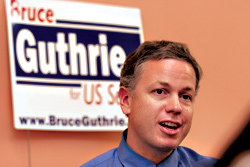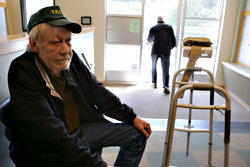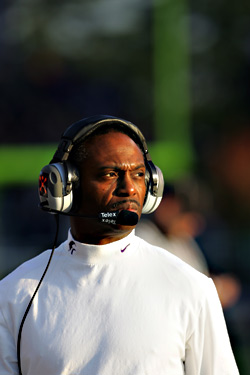Differences between males and females have fueled enough pop psychology books to line the shelves of the Library of Congress. But what differences between the sexes are there in pri- mary education?
Plenty, according to U.S. Department of Education data: Boys are four times more likely to show up in special education programs designed for emotionally/ behaviorally disabled (EBD) students than are girls.
In Seattle, 85 percent of the district’s 400 EBD students are boys.
Education experts are quick to point out that this doesn’t mean boys are four times as disturbed as girls are, but that boys—especially African-American boys—may be overidentified for EBD programs, as they are known, as a result of something as simple and complex as boys being boys.
“There might be some sexism going on here,” says Gene Edgar, a professor of special education at the University of Washington. “Probably boys are biologically disposed to be naughtier than girls. Schools are more favorable to girls’ behavior, which is not rowdy. Meanwhile, boys are picked out and sent to special ed.”
That’s the crux of the problem, researchers say: Normal boy behavior crashes into what is institutionally tolerable in the classroom. That makes boys stand out like whirling dervishes at school. As simplistic as it sounds, it’s a dynamic most education experts point to as setting boys up for inclusion in EBD programs.
“Boys may be prone to more overt acting-out behaviors,” says Ted Feinberg, assistant executive director of the National Association for School Psychologists. (Not paying attention in class, impulsiveness, and shouting are a few typical boy behaviors he cites.) “Girls are less so. That’s most troublesome for schools.”
“The school system is meant for good little girls,” says Nancy Meeks, director of special services for Highline School District, where 83 percent of the EBD students are boys.
Are schools dumping boys who are merely “bad” in the program? If so, that would run counter to Washington law, says Meeks. State law limits the EBD program to students with mental health and behavioral problems—and only after evaluation by a school psychologist and parental consultation.
Absent rowdy boys becoming a special interest group, this phenomenon is likely to continue.
But there’s another, more troubling statistic from Seattle’s EBD program: Almost half of the students in the district’s EBD program are African American, while African Americans account for only 23 percent of the district’s student population.
Local critics contend that it’s another sign of a district out of touch with its ethnic minorities.
“It’s way out of proportion,” says the Rev. Phyllis Beaumonte, a retired Seattle high-school teacher and chair of a local NAACP education committee.
By comparison, whites are in the EBD program roughly in proportion to their population in the district (40 percent).
So why are so many African Americans being pulled into the program, which some say stigmatizes children? Again, critics say, it’s a situation where natural behavior makes one an easy target for EBD—and that African-American kids merely behave differently than white kids.
“Different cultural ways of interacting create conflict,” says Dustin Washington, director of the American Friends Service Committee’s youth leadership development program. Washington hedged when asked for examples of how African-American behavior differs from, say, Latino behavior. “I don’t want to get into generalizations; different cultural groups express themselves differently.”
Experts say the numbers of African-American students popping up in EBD programs is not a Seattle phenomenon, but that it occurs across the nation.
“There’s a background of societal discrimination and teachers with racial stereotypes,” says Daniel Losen, a research associate at the Harvard Civil Rights Project. “Black males are more likely than whites to be diagnosed [as] emotionally disturbed and removed from the classroom.”
Seattle’s statistics seem to support such a conclusion. Pressed on the point, district officials will acknowledge it, although they are a bit squeamish about discussing why the situation even exists.
“It’s a huge problem,” says Barb Salo, special education program supervisor for the district. She says that the educational system is just at a point where it can now grapple with issues of racial bias. And, of course, the district has taken some baby steps to deal with racial inequities in its system.
Salo and others say the district is talking about race internally—they call it a “courageous conversation”—as a means of slaying the Hydra of disproportionality. The district hired a California-based consultant to put on recent workshops for district personnel about disproportionality—in academic achievement and discipline—and how to end it in their time. (The district will televise a four-hour program about disproportionality at 9 a.m. Aug. 27 on AT&T/Comcast Channel 26.)
Beaumonte says that the district had better take serious steps to clean house or the national NAACP will lodge a complaint.
As tough as some are on the district, others like Kayte Fearn at the Washington, D.C.-based Council for Exceptional Children credit the district with beginning a programmatic approach to addressing disproportionality.
“There was time when people didn’t want to accept it,” she says. “Now it’s the hottest topic in education in the country.”









